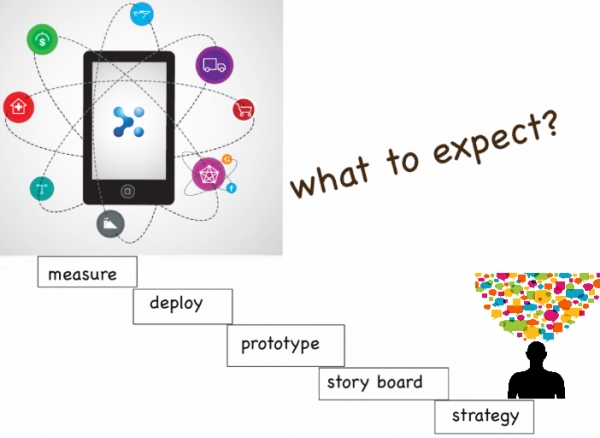


The journey of a successful mobile implementation starts with a solid mobile strategy. Creating a winning enterprise-wide mobile initiative involves strategy, deployment, support and measurable results— and it can be a complex undertaking for any organization. In this blog post , we will discuss the most important ingredients of a mobile initiative.
Starting a mobile project without a comprehensive mobile strategy is similar to travelling to a new place without a map. Delivering a mobile strategy doesn’t mean an architectural diagram. Rather, it provides answers to critical questions in the broader spectrum. The stage provides the framework to create a comprehensive vision as opposed to engaging in silo projects that might require future rework. Your key stakeholders , IT and development teams collaborate & review many critical aspects. Some of those are:
Once the planning stage is completed, the next step in a mobility implementation is to design a high level story board. Rather than using a traditional blueprint approach involving lengthy word documents and excel spreadsheets, It is best to use visual tools that simulate the visualization of your end-state solution. A clear alignment on screen flow, information display and overall theme is important for creating fresh& easy user experience.
This stage begins with a proof of concept (POC). The POC based approach comes from the mindset of “failing early & cheaply” prior to a full scale development. It is critical to test your key assumptions and hypothesis with quick experimentation before moving to deeper cycles of development. This will result in better risk management, cost control and expectation setting.
This phase involves the development of the your mobile solution. Agile development method (iterative & incremental build approach) enhances collaboration, risk management and user satisfaction. Some organizations prefer to run a pilot roll-out prior to a full scale deployment depending upon the specific situation.
Don’t forget to measure the positive outcomes and lessons learned from your mobile initiative. You can measure how mobility has increased your user engagement, customer satisfaction and operational efficiencies. Gathering feedback and analyzing the realized benefits reveal measureable results including reduction in back office support for your sales team, reduction in production cost for your supply chain, faster delivery of services, improved response time for field-staff and faster close for your financial teams. At this point, you should sit down with your stakeholder teams to adjust/refine the components of your mobile strategy as needed.
Curious to learn more? Simply send me an email at sana.salam@sodalessolutions.com I’d be happy to meet you for an information session.